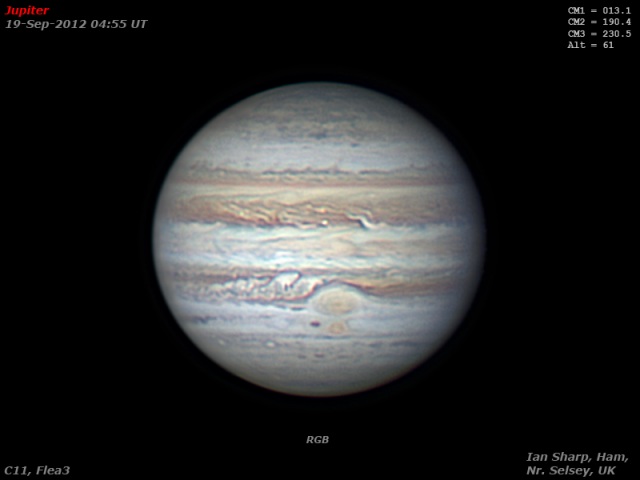A wonderful morning! Went out at 4am BST to be greeted by an incredible dark and starry sky. Jupiter and Venus both blazing in the East. Jupiter gets to just over 60 degrees in altitude from here in the UK this apparition, making for decent imaging if the seeing is good. Well the seeing was good this morning! This shot was the last of several runs, and has the Great Red Spot (GRS) just past the meridian. As always click on the image to see it full-size.
It was so nice – cuppa in hand and Jupiter rock steady on the screen. A glorious sight through the eyepiece too! Note ‘Red Spot Junior’ just to the South of the GRS. Lots going on too in both the NEB and the SEB.
This image was constructed out of 9, 60 second captures at about 64 frames per second. The sequence of colour filters was RRGGGGGBB.These were ‘de-rotated’ and combined into an RGB using WinJUPOS. This process prevents the features smearing out due to the rotation of Jupiter.

I was also out, and I agree it was a wonderful-looking sky on Wednesday morning (even in London). You have captured a very fine image.
Could you explain more about the process you used? Why do you take, say, 2 60s red exposures in succession rather than one 120s exposure? Why 5 greens in succession? Do you derotate each of the videos individually, or put them together and then de-rotate them? I’m taking just one of R,G and B (but 90s) and derotating them individually, then combining using WinJUPOS (replacing my old method of combining in Photoshop).
Best,
David
Hi David
Just found your comment in all the hundreds of spam comments!
I will write a blog entry explaining my process for you.
Cheers
Ian.
Comments are closed.